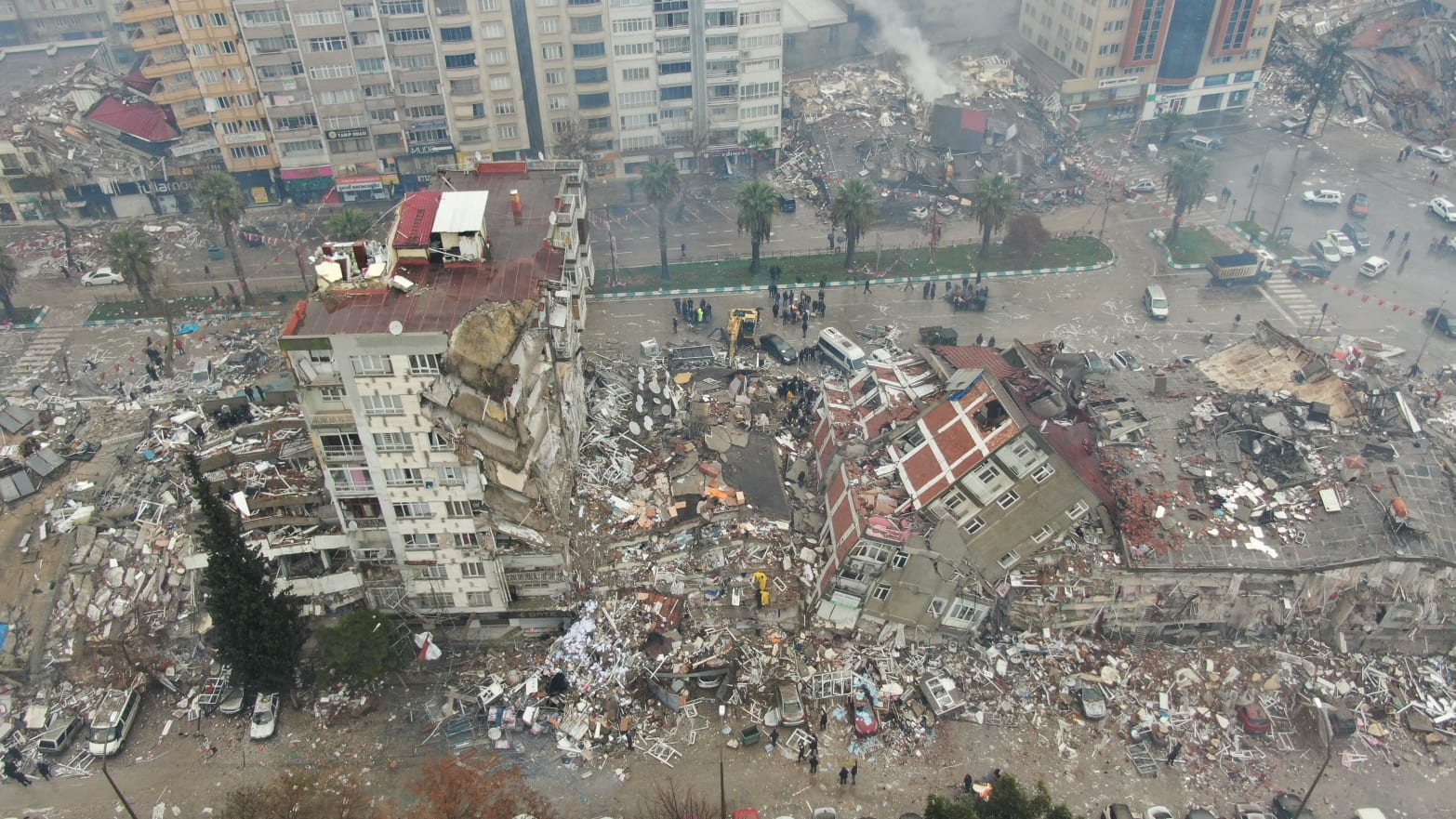
A powerful 7.8 magnitude earthquake hit southeast Turkiye and Syria early Monday, making buildings fall down and sending panicked residents pouring outside in a cold winter night. More than 20,000 have been confirmed dead in both countries and thousands more injured with the death toll expected to rise. Why did this happen?
Turkiye sits in an earthquake hot spot. Three tectonic(地质构造的) plates—the Arabian, Anatolian and African plates—meet in this region. Historical records of earthquakes in the region go back at least 2,000 years, to a quake in 17 CE that leveled a dozen towns. The East Anatolian Fault zone that hosted these earthquakes is at the boundary between the Arabian and Anatolian tectonic plates, which move past each other at about 6 to 10 mm per year. The elastic(有弹性的) strain that accumulates in this plate boundary zone is released by earthquakes happening occasionally, which have occurred for millions of years. ▲
Many of the collapsed buildings appear to have been built from concrete without enough seismic reinforcement(抗震加固). Seismic building codes in this region suggest these buildings should be able to sustain strong earthquakes—where the ground accelerates by 30% to 40% of the normal gravity—without causing this type of complete failure. The 7.8 and 7.5 earthquakes appear to have caused shaking in the range of 20 to 50% of gravity. Some of these buildings thus failed at shaking intensities(强度) lower than the “design code”.
Even though Turkish authorities know many buildings are unsafe in earthquakes, it is still a difficult problem to solve. Many of the buildings are already built, and seismic retrofitting(翻新) may be expensive or not considered a priority compared to other socio-economic challenges. In 2019, Turkey adopted new regulations to ensure buildings are better equipped to handle shaking. While the new rules are welcome, it remains to be seen whether they will lead to genuine improvements in building quality.
For now, aftershocks continue to shake the region, and search and rescue efforts continue. Once the dust settles, reconstruction will begin—but will we see stronger buildings, able to withstand the next quake, or more of the same?
本时文内容由奇速英语国际教育研究院原创编写,未经书面授权,禁止复制和任何商业用途,版权所有,侵权必究!(作者投稿及时文阅读定制请联系微信:18980471698)
1.Which can be put back into the blank?
A Many buildings collapsed like pancakes.
B Similar building collapses have been seen in the past.
C The recent earthquakes are thus not a surprise.
D Reconstruction after the quake may be hard.
解析:选C。C推理判断题。根据第二段可知,阿拉伯板块、安纳托利亚板块和非洲板块在这一地区相遇,当它们滑动并相互挤压,会产生摩擦和压力,引发地震。在这个板块边界地带积累的弹性应变是由数百万年来发生的间歇性地震释放出来的。因此,最近的地震并不令人惊讶。故选C。
2.Which was not mentioned as a reason why the earthquake caused so much damage?
A Many buildings were poorly constructed.
B The region sits in a very seismically active region.
C People were sleeping and had no time to react.
D Dealing with unsafe buildings needs time and efforts.
解析:选C。 C细节理解题。文章第二三四段分别介绍了此次强震造成巨大破坏的原因。第二段讲了板块交界处,地震活动频繁。第三段讲了该地区的很多建筑物没有达到抗震建筑规范的要求。第四段讲了虽然政府指导这些建筑物不安全,但是要翻新或重建这些建筑物是很难执行的。文中并未提及由于地震发生在凌晨人们无法及时反应逃生这一原因。故选C。
3.What is the author’s attitude to Turkiye’s new regulations?
A Positive.
B Negative.
C Uncaring.
D Uncertain.
解析:选D。 D推理判断题。根据第四段最后一句“While the new rules are welcome, it remains to be seen whether they will lead to genuine improvements in building quality.”可知,虽然新规则是受欢迎的,但它们是否会真正改善建筑质量仍有待观察,由此可知,作者对此持不确定态度。故选D。
4.What is the best title for the passage?
A Major earthquake kills 9,500 in Turkiye and Syria.
B Why did the Turkey earthquake do so much damage?
C Search for trapped people continues in Turkiye after strong quakes.
D What can be done to prevent a building from collapsing?
解析:选B。B主旨大意题。根据全文内容可知,本文主要分析了土耳其强震为何伤亡如此惨重的原因。故选B。